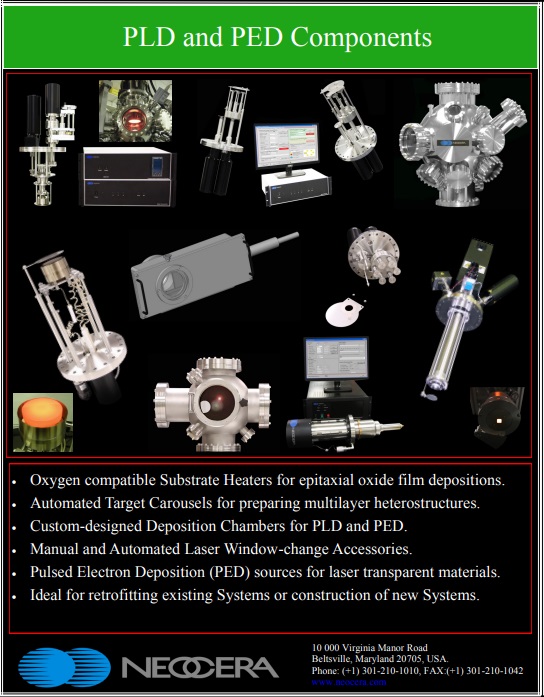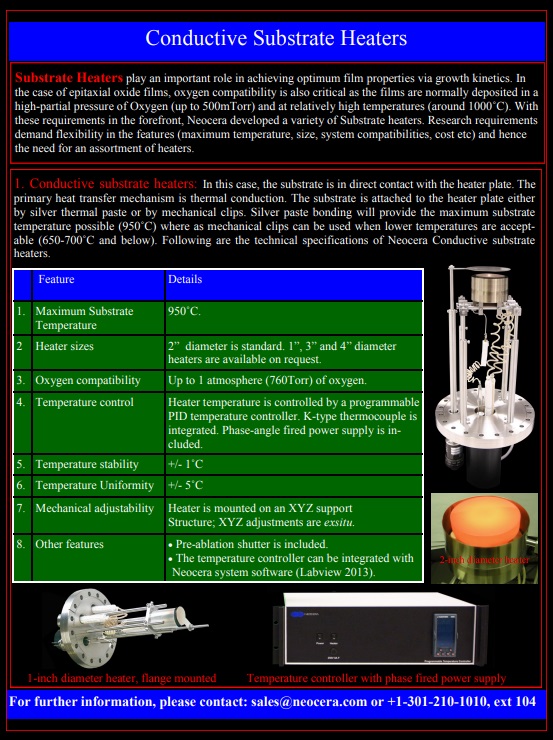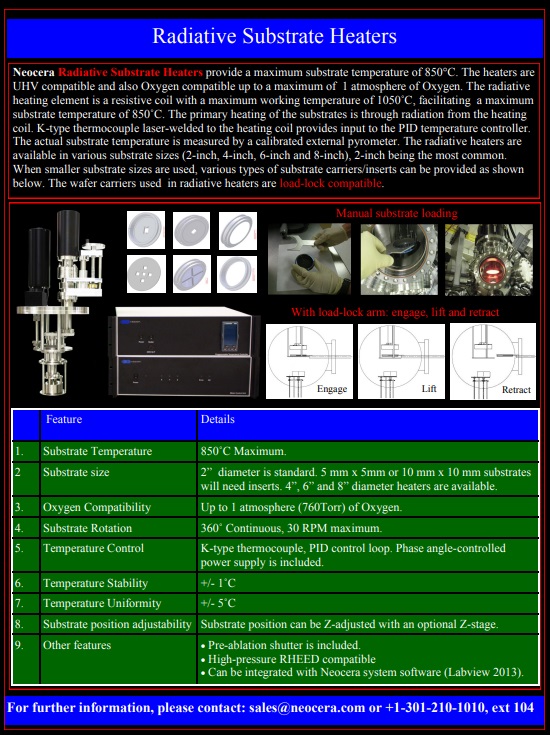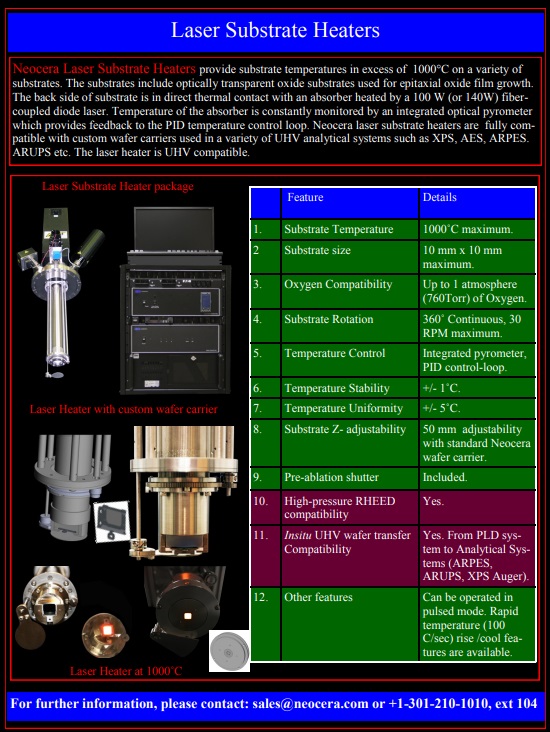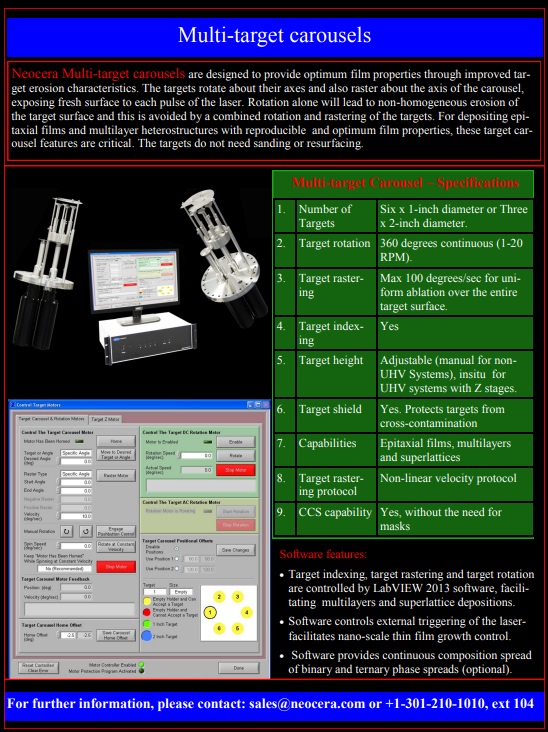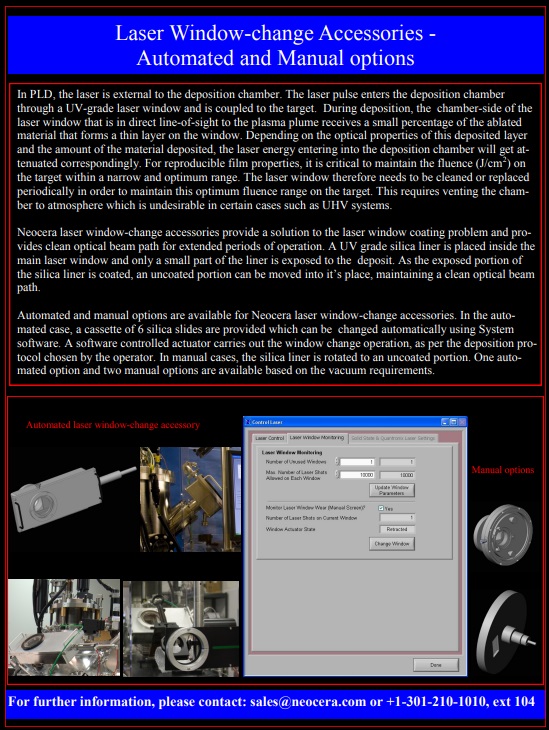Product
 Home> Product >Vacuums>Neocera
Home> Product >Vacuums>Neocera
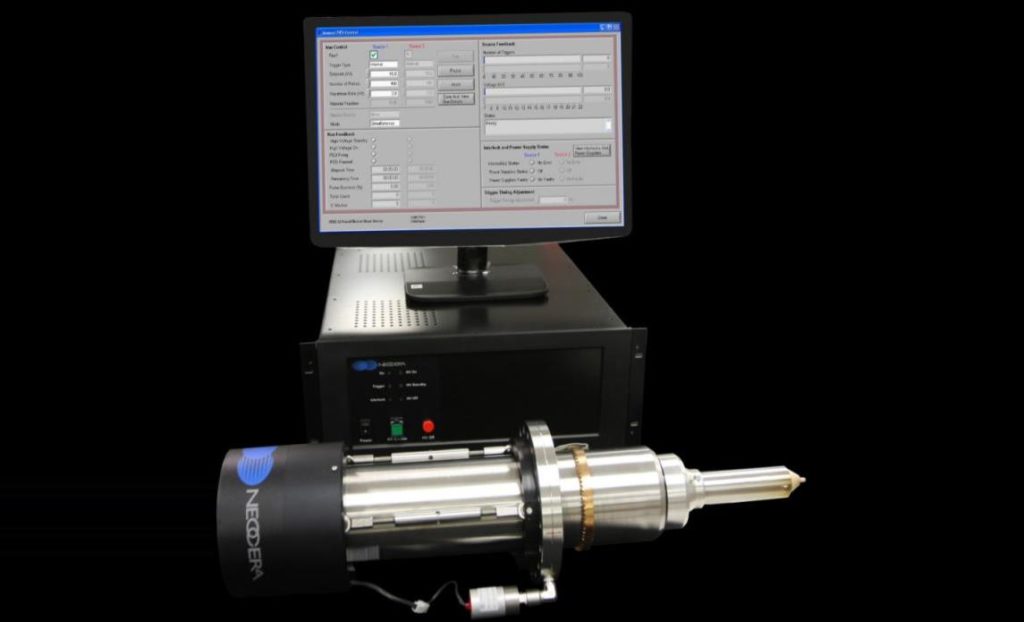
Neocera
Pulsed Electron Deposition (PED) Source
Pulsed Electron Deposition (PED) is a relatively unexplored thin film deposition technique and is complementary to the well known Pulsed Laser Deposition (PLD). In PED, a pulsed (100 ns pulse width) high power electron beam (approximately 1000 A, 15 keV) , generated in a gas discharge, penetrates approximately 1 μm into the target resulting in a rapid evaporation of the target material. The non-equilibrium heating of the target facilitates stoichiometric evaporation (ablation) of the target material. Under optimum conditions, the target stoichiometry is preserved in the deposited films as it is in the case of PLD.
Unlike PLD, where the ablation process is critically dependent on the optical absorption coefficient of the target material, in PED, the ablation is independent of optical properties of the target material. It depends on the range of electrons and other materials properties (such thermal conductivity, heat capacity etc) of the target. For most of the target materials, this range of electrons is of the order of a few microns. SiO2 with a large optical band-gap of 10 eV for example, is transparent to 248 nm of Kr-F excimer laser radiation commonly used in PLD. In PED however, the high-power electrons can strongly couple to the target material (SiO2), leading to SiO2 film deposition. The beam-solid interaction mechanism and the plume enrgetics are quite different in PED in comparison to PLD. YBCO for example, a well know superconducting material, can be deposited by PED around 10 mTorr of Oxygen partial pressure and 750˚C substrate temperature, where as the same material (YBCO) would need an Oxygen partial pressure of about 200 mTorr in PLD at about the same deposition temperature. This ‘phase space’ difference between PLD and PED provides a unique opportunity to materials researchers to extend the range of materials that can be deposited as thin films by pulsed techniques.
Unlike PLD, where the ablation process is critically dependent on the optical absorption coefficient of the target material, in PED, the ablation is independent of optical properties of the target material. It depends on the range of electrons and other materials properties (such thermal conductivity, heat capacity etc) of the target. For most of the target materials, this range of electrons is of the order of a few microns. SiO2 with a large optical band-gap of 10 eV for example, is transparent to 248 nm of Kr-F excimer laser radiation commonly used in PLD. In PED however, the high-power electrons can strongly couple to the target material (SiO2), leading to SiO2 film deposition. The beam-solid interaction mechanism and the plume enrgetics are quite different in PED in comparison to PLD. YBCO for example, a well know superconducting material, can be deposited by PED around 10 mTorr of Oxygen partial pressure and 750˚C substrate temperature, where as the same material (YBCO) would need an Oxygen partial pressure of about 200 mTorr in PLD at about the same deposition temperature. This ‘phase space’ difference between PLD and PED provides a unique opportunity to materials researchers to extend the range of materials that can be deposited as thin films by pulsed techniques.


